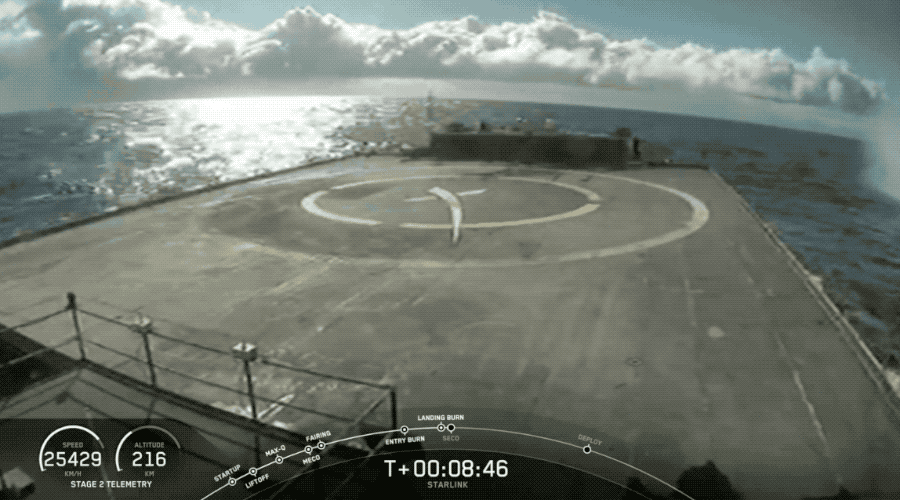SpaceX successfully launches 60 more Starlink satellites but misses booster landing
SpaceX has launched a batch of 60 Starlink satellites to orbit, marking its fifth overall launch of a group of 60 of the small spacecraft and its third this year alone. This launch brings the total constellation to 300 satellites for Starlink on orbit, extending SpaceX's lead as the largest commercial satellite operator in the world.
The Starlink project sees SpaceX deploying a constellation of small, low Earth orbit satellites that will work with one another in concert to deliver high-speed, low-cost broadband internet connectivity to users. The current goal is to launch enough satellites to begin providing service to customers in the U.S. and Canada later this year, followed by eventual rollout of service globally pending further expansion of the constellation.
SpaceX did something a little different with this Starlink mission, deploying them from the launch vehicle much earlier in the mission, after just one burn of the rocket's second stage, into an elliptical orbit from which they'll use their own thrusters to climb to their target orbit around Earth. It's a trickier maneuver to accomplish, but also saves SpaceX time, fuel and money in terms of launch costs.
Today's launch not only furthered SpaceX's Starlink work, but also included some crucial steps in the company's ongoing efforts to develop and improve its launch system reusability. The Falcon 9 booster used on today's launch was flown previously three times in 2019, for instance, and represents the fastest turnaround of a re-used booster yet for SpaceX, with just 62 days between its last flight and today.
SpaceX also attempted to land the booster once again during this launch - what would've been its 50th successful landing of a booster to date - but it missed the intended landing. The rocket first-stage returned to Earth and fired its landing engine burst as planned, but a live video feed from the drone ship landing pad operated by SpaceX appeared to show exhaust plumes, suggesting it came down in the ocean wide of its mark instead of landing on the pad as planned. SpaceX last missed with a landing in June when the centre core of its Falcon Heavy vehicle failed to nail the landing, but has otherwise mostly been able to land its boosters in recent years. The booster did apparently have a soft landing on the water, and is intact with the potential for recovery, according to SpaceX.

This launch also continued a trend SpaceX has had recently of trying to recover both halves of the fairing, a protective shell that encloses the payload of satellites aboard the rocket as they fly through Earth's atmosphere on their way to space. The company will attempt to catch both sides of that shell, using two ships in the Atlantic Ocean with giant nets strung across struts extending from their hull, as they parachute back. We'll update this post with the results of that recovery attempt when we get the news.
We won't have to wait long for another Starlink launch, as SpaceX is set to send more of its satellites up to orbit sometime next month, according to its current plans.